Radios are a great way to communicate in the backcountry or anywhere a cell signal isn’t easy to get. But with all the different frequencies, specs and buttons, which ones do you even look at? What are the best 2 way radios to use on your adventure?
We’ve sifted through the details for you so you can get outside faster. In this article we’ll cover things to keep in mind when choosing a radio for your next trip and some of the top-rated models of the year. If you are on a budget, check out the latest bargains on communication devices at Gear Snag.
For more of our top hiking gear recommendations, check out the Best Hiking Headlamps.
Quick Answer - The Best 2 Way Radios
- Midland GXT1000 VP4
- Backcountry Access BC Link
- Garmin Rino 750
- Midland LXT600VP3
- Cobra CXT 145
- Cobra CXT545
- Midland LXT500VP3 GMRS
Comparison Table - Best 2 Way Radios
For the best experience turn your device horizontally| Name | Type | Range | Weight | Water Rating | Price | Rating | Review |
|---|---|---|---|---|---|---|---|
| Midland GXT1000 VP4 | FRS/GMRS | Up to 36 miles | 8 oz | JIS4, splash resistant | $$$ | 4.2 | Read Review |
| Backcountry Access BC Link | FRS/GMRS | Up to 20 miles | 12 oz | IP56, very water resistant | $$$ | 4.6 | Read Review |
| Garmin Rino 750 | FRS/GMRS and GPS | Up to 20 miles | 12.8 oz | IPX7, waterproof to 3 feet | $$$$ | 4.0 | Read Review |
| Midland LXT600VP3 | FRS/GMRS | 30 miles | 8 oz | JIS4, splash resistant | $ | 4.1 | Read Review |
| Cobra CXT 145 | FRS/GMRS | Up to 16 miles | 2.2 oz | JIS4, splash resistant | $ | 4.1 | Read Review |
| Cobra CXT545 | FRS/GMRS | Up to 28 miles | 2.31 oz | JIS4, splash resistant | $$ | 4.1 | Read Review |
| Midland LXT500VP3 GMRS | FRS/GMRS | Up to 24 miles | 8 oz | JIS4, splash resistant | $ | 4.0 | Read Review |
| Name | Type | Range | Weight | Water Rating | Price | Rating | Review |
Reviews - The Best 2 Way Radios for Hiking
Midland GXT1000 VP4
Specs
- Type: FRS/GMRS
- Battery Type: Lithium Polymer
- Weight: 8 oz
- Range: Up to 36 miles
- Water Rating: JIS4, splash resistant
Features
- Up to 3,124 channel options
- Five animal call alerts
- Weather resistant
- SOS alert
- Bright LCD backlight
- Includes dual desk charger, AC adapter, mic headsets, and belt clips
BEST FOR: HIKERS NEEDING A FAST RECHARGE
PROS: Comes in packs of 2, fast recharge, headsets included
CONS: Only JIS4 splash resistant
Backcountry Access BC Link
Specs
- Type: FRS/GMRS
- Battery Type: Lithium ion rechargeable
- Weight: 12 oz
- Range: Up to 20 miles
- Water Rating: IP56, very water resistant
Features
- Water and dust-resistant to IP56
- Option for pre-set channel selections
- Glove-friendly controls
- Push-to-talk option
- Earphone jack
BEST FOR: COLD WEATHER ADVENTURES
PROS: Separate mic unit to clip to pack, glove friendly controls, separate batteries available, battery indicator
CONS: No hands-free, can’t use AA batteries
Garmin Rino 750
Specs
- Type: FRS/GMRS and GPS
- Battery Type: Lithium-ion rechargeable or AA battery pack
- Weight: 12.8 oz
- Range: Up to 20 miles
- Water Rating: IPX7, waterproof to 3 feet
Features
- Large touchscreen display
- Electronic compass with accelerometer and barometric altimeter sensors
- Active weather forecasts
- Smart notifications
BEST FOR: HIKERS WANTING GPS AND A RADIO IN ONE
PROS: GPS too, touchscreen, can use battery pack or AA’s
CONS: Expensive, low battery life
Midland LXT600VP3
Specs
- Type: FRS/GMRS
- Battery Type: Rechargeable battery pack or 3 AAA batteries
- Weight: 8 oz
- Range: 30 miles
- Water Rating: JIS4, splash resistant
Features
- 36 FRS channels
- 30-mile range
- Up to 2,662 channel options
- NOAA weather scan and alert
- Hands-free
BEST FOR: HIKERS LOOKING FOR GOOD VALUE
PROS: 2-pack, 2 power options, NOAA weather alerts
CONS: No USB charge, limited range in use
Cobra CXT 145
Specs
- Type: FRS/GMRS
- Battery Type: AAA rechargeable NiMH or AAA alkaline batteries
- Weight: 2.2 oz
- Range: Up to 16 miles
- Water Rating: JIS4, splash resistant
Features
- 10 NOAA weather channels
- Roger beep tone
- Call alert
- Power saver
BEST FOR: HIKERS ON A BUDGET
PROS: Inexpensive, lightweight, NOAA weather channels
CONS: No scan feature, no privacy codes
Cobra CXT545
Specs
- Type: FRS/GMRS
- Battery Type: AA NiMh rechargeable or AA alkaline batteries
- Weight: 2.31 oz
- Range: Up to 28 miles
- Water Rating: JIS4, splash resistant
Features
- 10 NOAA weather channels
- VibrAlert for notifications
- Hands-free feature
- Voice detection
BEST FOR: FAST AND LIGHT HIKERS
PROS: Small with good range
CONS: Only splash resistant, button lock doesn’t disable flashlight
Midland LXT500VP3 GMRS
Specs
- Type: FRS/GMRS
- Battery Type: Rechargeable battery pack or 4 AAA batteries
- Weight: 8 oz
- Range: Up to 24 miles
- Water Rating: JIS4, splash resistant
Features
- 22 selectable channels
- Up to 24 mile range
- Water resistant
BEST FOR: HIKERS WHO WANT A SMALL BASE STATION RADIO
PROS: Small and light, keypad lock, base station available
CONS: No weather channels, no privacy codes, low max volume
HOW TO CHOOSE THE BEST 2 WAY RADIOS
FREQUENCIES
Most of the handheld radios use FRS or GMRS frequencies. FRS channels are free to use without license. GMRS frequencies have longer range but require a license from the FCC to use. VHF are marine channels only for use on the water. If you’re out sailing, you’ll be using VHF to communicate. Ham or Amateur radios have more frequencies and longer range but require a written test to get the license.
PRIVACY CODES
Privacy codes or “Extra Channels” are additional combinations of the 22 main FRS/GMRS channels that radio makers add to help you find a quiet place to talk. These need to be used with radios from the same manufacturer.
For example, we could decide to talk on channel 13, code 10 and it should eliminate chatter from any other code on channel 13. It’s not perfect and sometimes you can hear people on other channels talking. If the specs list anything more than the 22 main channels, they are just privacy codes and may or may not work with other radios.
RANGE
Maximum range with a radio is very dependent on conditions. The range stated in the specs of the radios will usually be the maximum range under perfect conditions, say 35 miles. Up to 5 miles is a common range for GMRS frequencies and up to 2 miles for FRS frequencies. If there is anything blocking line of sight to the other radio like trees or a building will reduce the range.
WATERPROOFNESS
Many radios claim to be waterproof but are actually just water resistant. If you are in a wet environment, make sure you get a decent waterproof rating. The IP or JIS rating will tell you how resistant they are. The higher the number the better. Many radios are JIS4 which is splash resistant. IPX4 will be splash resistant as well whereas IPX7 will be waterproof to 3 feet.
BATTERY TYPE
Some radios use Lithium-ion batteries which will be better in the cold. Some have different options to use either a battery pack or AA batteries depending on the situations. Newer models can charge through a USB power pack or solar charger. Think about what conditions you will be in and how you want to charge your radio. You might even consider getting a solar backpack to make sure you’re able to recharge while you’re outdoors.
BATTERY LIFE
Battery life can range from a few hours to a few days. How long will you be using your radio each time? Can you take extra batteries or battery packs?
WEIGHT
How much can you carry in your pack? You might need to stick with the smaller lighter radios that might not get the range or battery life as the larger units.
NOAA WEATHER CHANNELS & ALERTS
Most radios these days can use the National Oceanic and Atmospheric Administration (NOAA) weather channels to get updates on local weather. Some will alert you if severe weather is heading your direction. Look for NOAA weather alerts if you want to be notified without having to continuously monitor them.
MULTI-USE UNITS
Some units have other capabilities like VHF radio or GPS on them. These can be useful to eliminate carrying 2 items. Make sure the battery life is long enough for your trips while doing both functions. If you are just looking for a dedicated GPS, check out our article on the best GPS for hiking.
CELL PHONE EXTENDERS
New cell phone attachments like the goTenna plug into your phone and allow you to text other phones with a goTenna when out of cell range. You can’t communicate with anything else but if you just need to chat with friends or family it might be a simple way to go.
READ MORE
For more of our top hiking & backpacking gear recommendations, check out these popular buyer's guides:
Best Backpacking Sleeping Bags
Best Backpacking Sleeping Pads

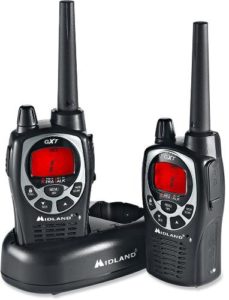
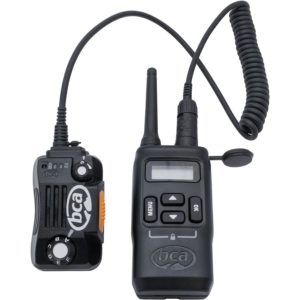
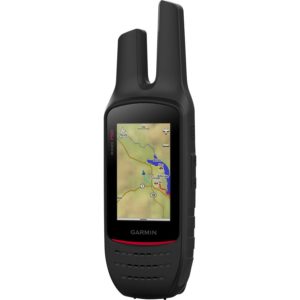
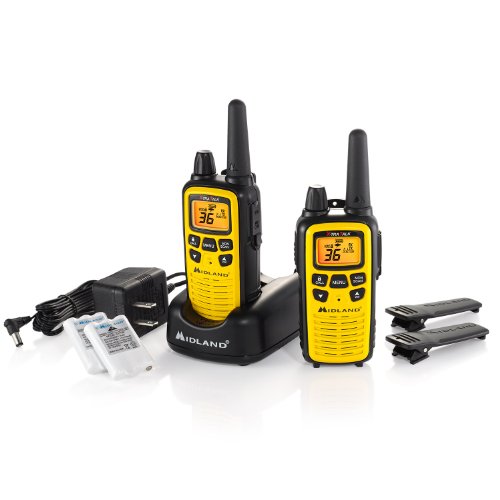
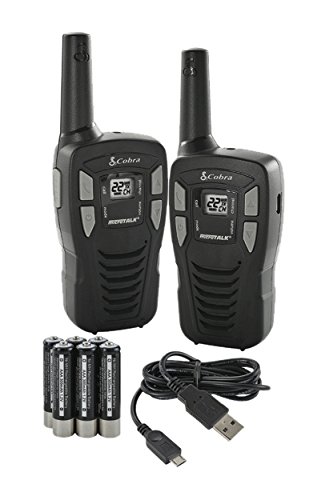
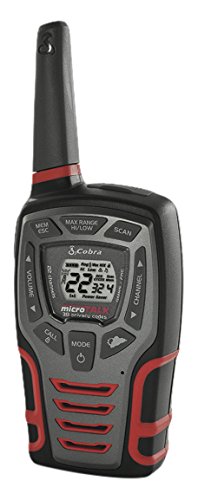
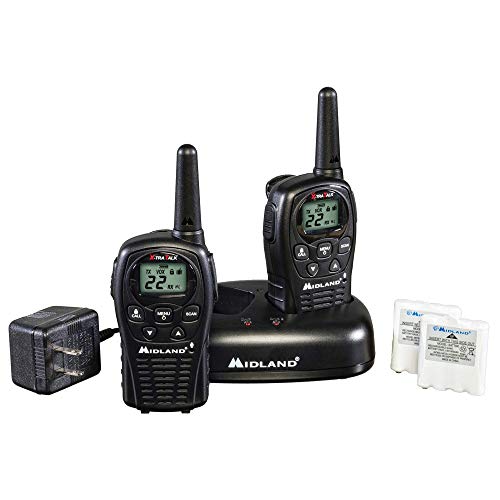
This is an excellent list of key features to identify to ensure the best buy. Good battery life and range can be especially important.
A solar backpack is a creative idea. You make a good point when suggesting people consider their environmental conditions and then choose the battery type from there.